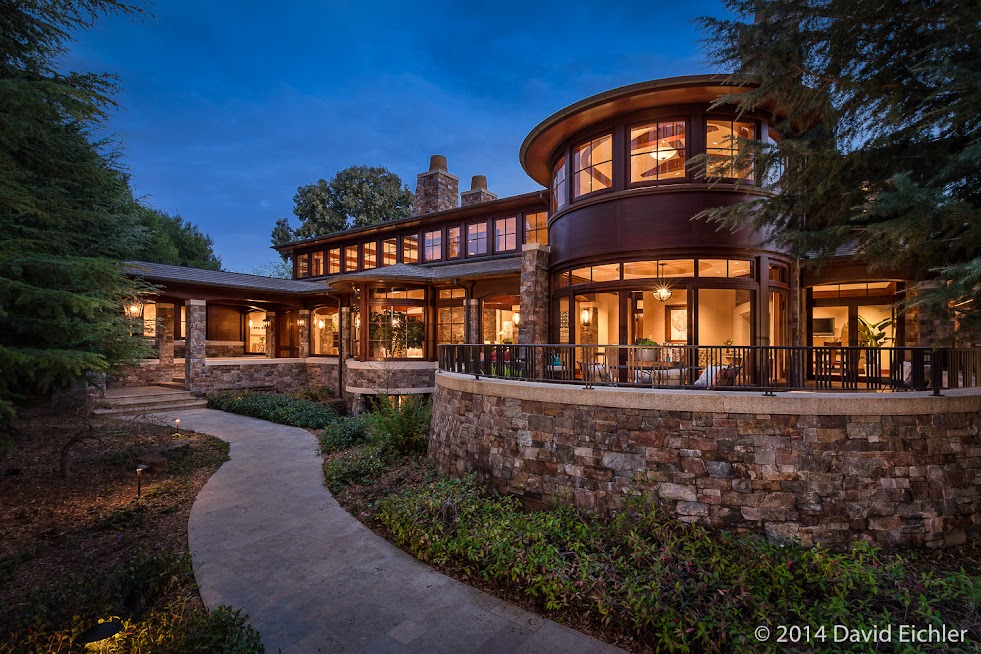Eugene Atget was a french commercial photographer who was active from the late 19th Century through the early 20th Century. He photographed a variety of subject matter, including landscapes, portraits, street scenes and architecture, and I find some of his architectural photographs to be among his most compelling ones. Before I knew about famous architectural photographers such as Julius Shulman and Ezra Stoller, Atget's photographs were among those that influenced my understanding of how to render architectural subjects through the medium of photography, and I would recommend that all serious architectural photographers study his work. Some may be put off by technique that was quite primitive by today's standards (in fact his equipment and materials were already antiquated by the standards of his day); however, even if that is the case, I believe that Atget's sense of composition will still have a strong effect. You can find out some more about Atget and see some examples of his work here: Eugene Atget

This blog is primarily devoted to the techniques, business, art and aesthetics of photography, especially the genres of architectural, interiors and luxury real estate photography. If you arrived here looking for my photography portfolio website, you will find that at www.eichlerphoto.com. All images and writings on this blog are copyrighted material. No usage of this material may be made without my express, written permission.
Monday, April 23, 2012
Wednesday, April 18, 2012
Monday, April 16, 2012
90 Stevenson Lane, Atherton
Here are a couple of shots I did last month for a high-end real estate listing in Atherton, CA, for Hanna Shacham, with the Menlo Park office of Coldwell Banker. It is always fun to shoot homes that are nicely decorated. In this case, it was the homeowner's own decor, not staged furnishings. I would like to point out that photography for real estate often involves using very wide views, to give a sense of the space. If I were shooting for an interior designer or an architect, I would most likely create somewhat tighter compositions, at least for the kitchen shot.
A technical aside, the wider you shoot interiors, the harder they tend to be to light, because there is less room to hide the lights or to avoid unwanted reflections and shadows from the lights. Also, shots such as these tend to need supplementary lighting not only in the foreground space, but in the adjoining spaces as well, to keep them from looking like "black holes."
Wednesday, April 4, 2012
"HDR has More Pop"?
I recently received a request for a quote for a photography assignment, among the requirements for which was that the photos be done using the process known as High Dynamic Range Imaging (HDRI or HDR for short). When I asked why the requirement for HDR, the client's representative explained that it was because HDR has more "pop". I think what people are referring to when they say this that they are seeing photos created with this process that have a high degree of color saturation, often to the point that photos look unrealistic and garish. This may help the images to stand out, but in my opinion the over-the-top HDR look does not lend itself well for marketing images of buildings. On the other hand, I have seen plenty of images made with HDR that look flat, muddy, dark and grungy, that is, without any pop at all. It really is not about the process. It is about the photographer, although to some degree the subject matter will play a part as well. With a dull subject and dull lighting, even the most talented photographer is going to struggle to produce compelling results, no matter what process he or she may use. In my opinion, the solution to such a situation is often the creative use of supplementary lighting.
While it is possible to produce compelling and realistic images using the HDR process, it can be very hard to do, since the process can be difficult to control, and, in my opinion, it is not that suitable for all kinds of subject matter and lighting conditions. Furthermore, it is quite possible to use Photoshop alone to produce images with as much pop as anyone might need. From what I have seen, the vast majority of experienced architectural and interiors photographers who are producing high-quality work for architects, interior designers, magazines, advertising companies, hotels, builders, etc., either do not use HDR, or use it only occasionally for particular situations. Where one typically finds HDR being used frequently for commercial photography is in the field of real estate, where photographers use it as an expediency to meet the requirements of assignments involving low budgets, high quantity and rapid turnaround, and where high quality is often not a primary consideration.
By the way, when I use the term HDR, I am referring to the 32-bit, moving-point process that is the subject of Michael Freeman's book Mastering HDR Photography: Combining Technology and Artistry to Create High Dynamic Range Images.
Monday, April 2, 2012
Subscribe to:
Posts (Atom)










